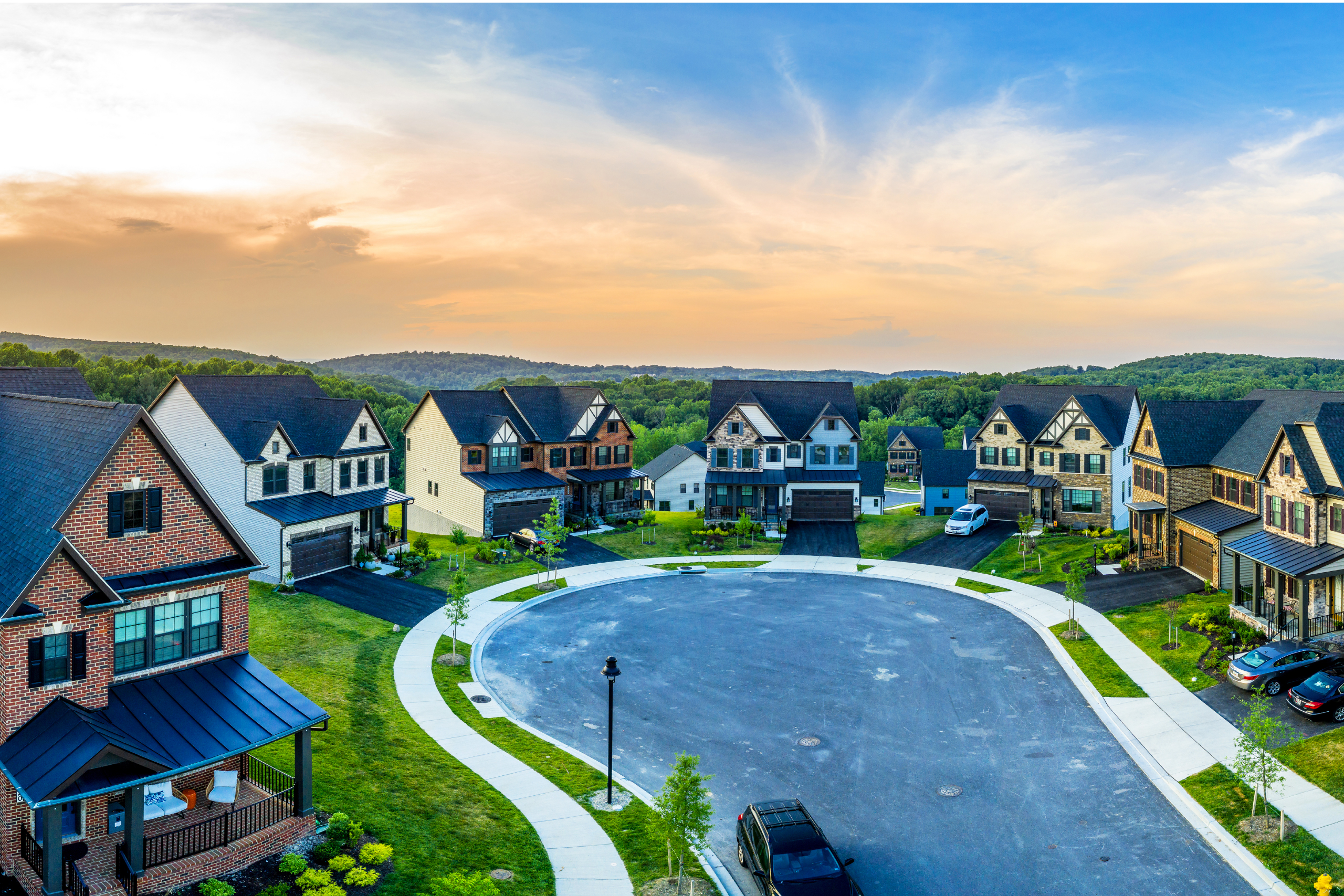Build-to-rent single-family homes have been on the rise in recent years, but they haven’t yet comprised a major portion of new housing developments. However, the changing market landscape brought on by COVID-19 and the associated economic recession could put them on track to become the next big real estate trend.
Due to COVID-19, more and more people have been looking to make the move to the suburbs, looking for more space, less crowding, better air quality, and other suburban perks. But for many, buying a home is undesirable or altogether out of the question due to the cost of a mortgage and down payment and/or the limited availability of housing in many markets. When the pandemic hit, it drove the median price for home sales up, resulting in high demand with dwindling affordable options. This all adds up to a growing segment of the population looking to live in a single-family home but not looking to (or able to) own a home.
The response? Build-to-rent single-family homes.

While people search for suburban housing that fits their needs, developers are also discovering that luxury build-to-sell single-family homes weren’t driving the same profit they once did. In 2019, the sales of luxury or move-up homes dwindled, so home builders like Meritage, Lennar, and KB Home shifted towards an entry-level product. And realized they could make money doing it.
The History of the Single-Family Home Rental Trend
From 2008 to 2018, the number of single-family rentals (including existing homes and build-to-rent units) grew 18%. By 2018, single-family rentals accounted for 15.5 million units—about one in every three units nation-wide.
What started this? The recession in 2008 caused investors to buy up foreclosed homes in bulk and for cheap and begin to rent them out. But later, home prices recovered and it became more difficult to find foreclosed homes in bulk. Further complicating the home rental model was the fact that upkeep and maintenance on older homes was more challenging and costly than that of newer homes. Hence, incentive grew for purpose-built, single-family rental homes.
Where Are Single-Family Rental Homes Being Built?
Although this trend is cropping up across many United States markets, it’s more common in some areas than in others. In general, the focus is on areas where builders can acquire cheap land and offer rental prices ranging from $1,600 to $2,000. This includes areas of Texas, the Carolinas, Florida, and Arizona.
For example, Capstone Communities announced in January 2021 that they were building a community of cottage-style build-to-rent single-family homes in Summerville South Carolina, estimating a completion in early 2022.
How Are Single-Family Rental Homes Different From Traditional Homes?
A few distinct design features make build-to-rent single-family homes different from their build-to-sell counterparts. Builders are focusing on materials and layouts that will be durable, desirable, and efficient with long-term maintenance in mind. That typically means no carpet, laminate-wrapped cabinets, and composite decks, for example. In many cases, builders opt for more expensive installations because they offer added longevity that saves money in the long-run.

Who’s Renting Single-Family Homes?
Who’s driving the demand for single-family home rentals in 2020 and into 2021? There are actually many segments of the population who are interested in this product, each for their own reasons. We’ve already mentioned growing demand among millennials, but active adults and seniors also comprise a significant segment of the target audience for these new housing developments.
Perks of build-to-rent single-family homes include avoiding the obligation of a mortgage or costly down payment while also getting many of the usual benefits of home-ownership: no shared walls or corridors with neighbors, more private outdoor space to enjoy, private parking (typically in an attached garage), and distance from the hubbub of urban centers while still offering reasonable accessibility to the action.
Who do these perks most appeal to? Here’s a breakdown of some of the groups that are contributing to the demand for these single-family home rentals:
- Millennials moving to the suburbs in search of more space and good schools, including those who have recently had their first child or anticipate having one soon. This group may be particularly motivated by the benefit of avoiding a costly mortgage or down payment.
- Gen Xers who enjoy privacy and space but don’t want the maintenance or obligation of owning a home
- Boomers looking to downsize and enjoy a more maintenance-free lifestyle
- Anyone in need of transitional housing who doesn’t want the apartment lifestyle (e.g. moved for a job or recently divorced)
- Anyone who wants more flexibility with their housing situation and doesn’t want to be tied down to a mortgage
- People with unusual schedules like pilots, nurses, and public service workers. This is a group of people who may want to live in a home but need something that requires less maintenance due to their demanding schedules.


